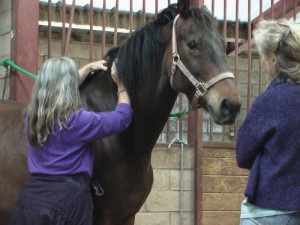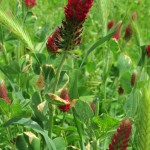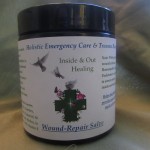
Kathryn Shantie Ariel assisting JR (horse)
to release body imbalances from leg injury
What is Holistic Emergency Care?
What does holistic emergency care mean? How is it different from the traditional way that first aid is taught? Even in emergencies, holistic healing deals with the whole being, not just the part that hurts. It recognizes that all your horse has four energy bodies, spiritual, emotional, mental and physical and the knowingness that to successfully treat or facilitate healing of any illness, injury or trauma, all four bodies must be brought back into balance.
Many health problems, be they illness, injury or other trauma, begin with an emotional upset or imbalance of some type. If this is not corrected it can move into the mental body, and then eventually into the physical, where it manifests as an illness or bodily injury. This is as true of our horse companions as it is of us. It has been well documented that animal companions, horses, dogs, cats, etc., will often take on the diseases or traumas of their humans in order to both assist them as well as mirror to them, to help in the learning of soul lessons.
When an injury or acute illness occurs, the holistic caregiver(s) must quickly assess the location of, and care for, the mental, emotional and/or physical imbalances in play, utilizing the tools that will assist the horse’s inner healer to the highest degree possible. In order to optimally assist all bodies, the holistic healer/facilitator may utilize a variety of vibrational healing tools: herbs, homeopathy, flower essences, essential oils, Theta Healing, Reiki, MAP (Medical Assistant Program), and prayer to name a few. See Holistic Emergency Care Tool Kit for details.
Assessing the Situation
First, the situation must be assessed. Here are the primary steps to dealing with any emergency:
- Detecting there is an emergency or traumatic imbalance
- Check for life-threatening injuries
- Tend to life-threatening issues, while stabilizing the environment, the horse (and other injured or traumatized individuals)
- Evaluate and tend to less challenging issues
In an emergency situation the immediate issue is the stabilization of the bodies (emotional, mental and physical), and the correcting or containing of life-threatening situations. If no tools or help are immediately available, my suggestion is this:
- Center yourself, breathing and connecting deeply with your heart and God-self
- Ask Creator/God or Angels to stabilize the situation: you, whoever is injured, etc. and bring you all into balance.
- Ask for divine assistance
- Then while continuing to breath and stay centered, follow the guidance that your heart is telling you to do. Trust your intuition! The energy of love is the greatest healer. Let unconditional love to flow through you and expect miracles. Though the asking of divine assistance, miracles can and do come forth every day. I cannot emphasize this enough!
Life Threatening Emergencies
Life threatening emergencies come in many forms. Here are some of the more obvious ones:
- Severe Bleeding
- Respiratory dysfunction or arrest
- Cardiac dysfunction or arrest
- Allergic Reaction (including Anaphylactic Shock)
- Nervous system imbalance (including Hypovalemic Shock)
- Skeletal injuries of major bones
- Internal bleeding
- Colic
- 2nd and 3rd degree burns
Less Urgent Emergencies and Imbalances (examples)
- Soft tissue injuries
- Skeletal Injuries (unless primary support bone)
- Puncture Wounds and other cuts or scrapes
- Minor allergic reactions
- 1st and 2nd degree burns; dependent upon amount
Recognizing an Emergency or Trauma
With any emergency or trauma there are basic signals to bring your attention to the situation. Some may be very subtle, coming to the surface in seemingly sporadic fashion. Some will lurk just below the surface and then suddenly explode into a physical out crying which requires immediate assistance.
A main tool for you as your horse’s caretaker is to understand his basic anatomy and physiology including the norms for pulse, respiration, blood pressure, overall physical composition, balanced mental and emotional composition and such. Check in with your horse regularly through quiet observation as well as verbal and telepathic communication so that she can relay to you how she is feeling and you can do the same with her. Be aware of each other. This is a vital step in being able to recognize and respond to an obvious emergency or a trauma, which may be less obvious to the casual eye.
Some emergencies may come on suddenly and perhaps without prior warning. These are going to require immediate response to stabilize the physical, emotional and mental bodies.
In summary, it is with holistic emergency care and trauma recovery that we address the whole by utilizing tools and divine assistance that serve and rebalance the whole. In so doing the causal energies that brought the situation into a physical manifestation may be removed or healed completely, thus eliminating the need for the human or horses to repeat the experience in any form.
Written by
Kathryn Shanti Ariel – Earthwise Institute




